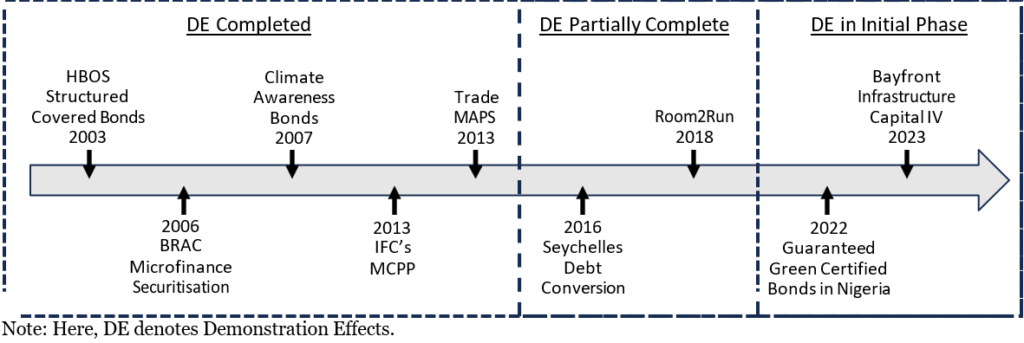Read the full paper.
Development Finance Institutions (DFIs) value mobilisation as a way of increasing the development impact of their activities by drawing on the risk capacity of the private sector. As conventionally defined, mobilisation refers to financing contributed by private sector investors to transactions in which DFIs have participated.
Such direct mobilisation is only part of the story, however. One may hypothesise that the scale of development financing would be considerably greater if DFIs focused on deals that remove or mitigate informational or other barriers for other financial market participants. Transactions that reduce informational barriers in this way, eliciting follow-on transactions in which the original DFI is not involved, may be described as having ‘demonstration effects.’
Researchers have analysed demonstration effects in many different economic contexts. They are also frequently cited by DFIs to explain how their activities generate development. So far, however, most DFIs have not viewed demonstration effects as a key objective, and they are not commonly represented in internal DFI control frameworks such as pricing, limit setting, or corporate planning systems.
This report aims to lay the groundwork for ex-ante assessment of demonstration effects in DFI transactions. To achieve this, we examine a set of innovative transactions to identify what factors contributed to their success or otherwise in eliciting follow-on deals. Among the case studies, as well as DFI activities, we also include some private sector, developed-market transactions that did not involve DFIs to reveal key aspects of ‘market opening’ deals.
The deals we examine are shown in the below figure. The figure serves to emphasise how the deals are distributed over the three categories: (i) those for which demonstration effects are fully complete, (ii) those for which these effects are partially complete and (iii) those for which demonstration effects are in process.



